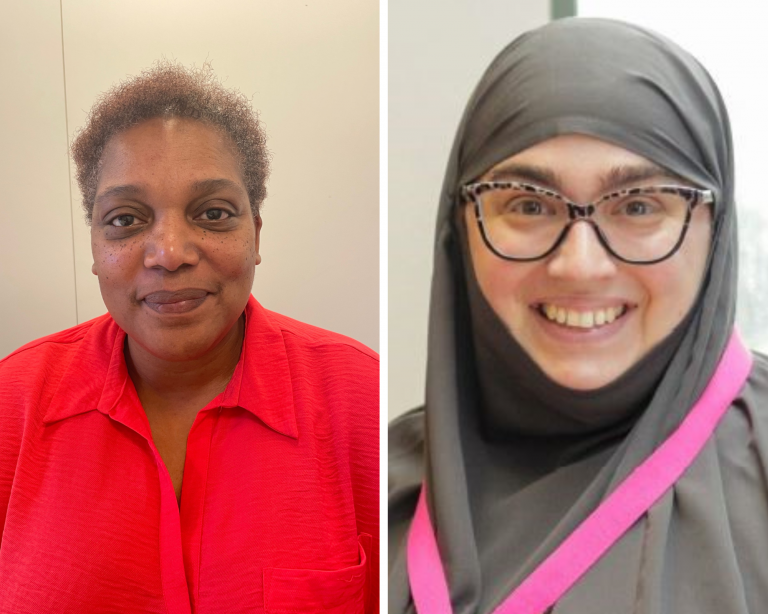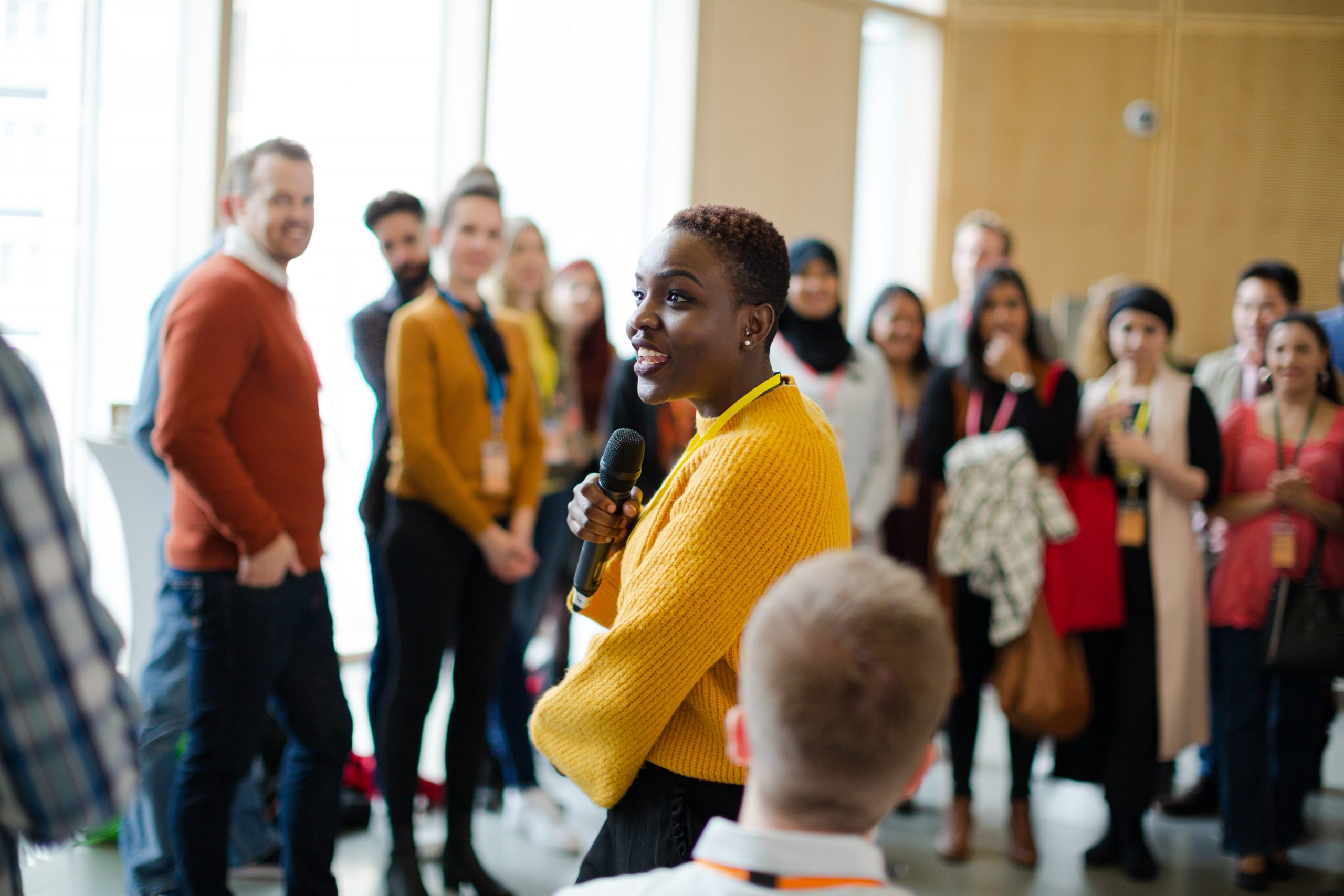In 2022, the Health Innovation Network launched an Involvement Strategy that represents a refresh in thinking and effort to co-produce health innovation. Part of this strategy was a new Lived Experience Partner role and we are delighted to have successfully appointed two partners, Faith Smith and Aurora Todisco. Faith and Aurora are working with us to advise on involvement activities within our projects, expand our community networks and support other experts by experience and service users who work with us. Their role is fundamental in supporting us to embed involvement within our organisation.
As people with extensive experience of the health and care system and involvement activities in this space, our partners are looking forward to bringing their specialist knowledge to the table and informing the development of our co-production work. Faith has worked with local and national involvement initiatives including being on the South London and Maudsley (SLaM) involvement register which focuses on mental health. In this role she regularly provides staff training and supports recruitment processes. More recently, Faith has supported the development of the Seni Lewis Training Programme for SLaM staff to prevent and manage challenging behaviours in the mental healthcare setting.
I'm very much a people's person, and I think a lot of what I do is because I want others to be empowered to have their voices heard.
- Faith Smith, Lived Experience Partner
Faith is no stranger to the HIN, having already worked with us on our Mental Health Safety Improvement Programme, and she is delighted to be able to share her expertise at a more strategic level.
Aurora has also previously worked with us and was part of our lived experience reference group who helped to develop our Involvement Strategy. When this new role was introduced, Aurora saw a unique opportunity to use her personal and professional experiences to help inform future engagement activities.
In this role I'm focused on drawing upon my lived experience to deliver healthcare services from a local and neighbourhood level.
- Aurora Todisco, Lived Experience Partner
Aurora has extensive experience of supporting involvement work locally and nationally, and since 2021, she has shared her own lived experiences and taken part in over 350 co-production activities and engaged with over 70 national stakeholders. Her professional background, which covers finance, HR and governance development also complements the role. She currently works with Local Voice, a user-led charity that delivered the service provision for local Healthwatch organisations across north east London and supports resident voices.
Having started their roles in February, our partners have integrated seamlessly into our organisation and are already in high demand for their expertise. Highlights so far include Faith supporting a workshop developing an e-learning for the Eating Disorders Transitions national programme and advising on focus groups for our HEAL-D programme that addresses Type-2 diabetes health inequalities.
Aurora’s work has included taking an active role in our experience-based co-design (EBCD) project, which launched as an expansion of our work to help people manage chronic pain, for which she helped co-ordinate a patient-facing workshop in March. She has also given advice on involvement approaches for our Innovation for Healthcare Inequalities Programme (InHIP) with NHS England and has been attending the HIN Patient Experience Champions Club, a space for HIN staff to share their experiences of involvement and learn from each other.
Both Faith and Aurora are keen to ensure their role has an impact locally at the HIN as well as on a wider scale.
I'm keen to explore the importance of shared learning and take-up of research , recognising people's different experiences and ensuring that improvements are tailored to specific populations.
I'm looking forward to helping the HIN become an evidence-led organisation with strong links to the community, represented by people with lived experience.
Involvement is still a relatively new and developing area in the health innovation landscape, and we are hopeful that our approach to it will help to establish a model that can be applied in other health and care organisations. We are proud to be partnering with the people who lie at the heart of the healthcare system first, and hope that this is one way we can make our engagement more accessible, comfortable and a truly safe space for everyone involved. We are keen to be transparent and share both the challenges and successes of our approach, so please get in touch if you would like to hear more.
I wish to be seen as a critical friend around the table where we discuss health care improvement and innovation, helping to keep track of changes and impact at governance level.
I feel very welcome at the HIN, and confident in the fact that my contributions are valued and taken seriously.
Find out more
If you would like to know more, please contact the HIN's Implementation and Involvement Manager.
Get in touchNipping it in the bud: helping the NHS treat eating disorders as early as possible

To mark Eating Disorders Awareness Week, National Programme Manager Jill Owens reflects on the challenges of eating disorders, why it is crucial to treat them as early as possible and how early intervention services like First Episode Rapid Early Intervention for Eating Disorders (FREED) can help.
Eating disorders are on the rise, with referrals already increasing before the Covid-19 pandemic and particularly pronounced growth afterwards. Hospital admissions for eating disorders have increased by 84 per cent in the last five years, with children and young people especially affected with a rise of 90 per cent. They can affect anyone regardless of gender, ethnicity, age or body size. Tragically, eating disorders have the highest mortality of all mental health disorders.
I have personally seen how these disorders can fool people into thinking that it is a protective factor – providing either control or comfort. It can also be very secretive and isolate a person from those who want to help them. Recognising difficulties with eating and taking those first steps to find help takes courage and strength, but it is worth it because healthy eating habits help us live full and happy lives.
The phrase ‘prevention is better than cure’ - attributed to the 15th Century Dutch philosopher Erasmus - seems so logical that it’s hard to imagine a time when this sentiment wasn’t commonly used.
However, eating disorders are one group of illnesses where the causes and triggers can be so diverse that universally effective prevention is hard to find. If we can’t yet prevent people from developing eating disorders, what can we do?
We know that eating disorders cause changes in the way a person thinks and feels, which become harder to reverse over time.
Fortunately what we do have is the ability to tackle them as early as possible with the right tools, support and awareness. There is growing evidence that the earlier we act to provide help to people with eating disorders, the better their chances of recovering quickly and living their lives to their full potential.
We know that eating disorders cause changes in the way a person thinks and feels, which become harder to reverse over time. While recovery is possible and well worth aspiring to at any stage, a “golden window” for starting treatment of about three years from the onset of the disease seems to deliver the best long-term results. To get treatment as early as possible, people need to be able to spot the signs in themselves or others and know where to go for help.
At the HIN we have been proud to lead the spread and adoption programme for early intervention in eating disorders since 2020, a programme which has been coordinated by the AHSN Network. As National Programme Manager I have been thrilled to work with people who see the importance of early intervention, and to be part of a programme which has benefited so many people.
The model for the programme is First Episode Rapid Early Intervention for Eating Disorders (FREED). FREED supports early interventions for people aged 16-25, the most likely age to develop an eating disorder and a unique time of life where considerable changes take place. FREED uses innovative methods to address the challenges of emerging adulthood and the early stages of eating disorder development, reducing the duration of untreated illness.
FREED was developed by a team at South London and Maudsley NHS Foundation Trust (SLaM) and Kings College London (KCL) with support from the Health Foundation. The FREED team have been working hard to develop research and evidence to demonstrated the effectiveness of this approach, including studies that show:
- 32 per cent reduction in wait time from referral to assessment in FREED patients;
- 59 per cent of FREED patients with anorexia nervosa reached a healthy weight by 12 months, compared to 17 per cent of non-FREED patients;
- duration of untreated eating disorder reduced from 19 to 13 months.
At the Health Innovation Network we are delighted that FREED services are now either active or developing across England. All 15 Academic Health Science Networks (AHSNs) have provided time and expertise to support local services in understanding the evidence behind FREED and work towards adoption. The programme is drawing to a close in March 2023, leaving a legacy of increased awareness of the benefits of early intervention, numerous resources to help eating disorder services set up early intervention services, and well over 2,000 young people having received treatment.
The work will continue to move forward with support from NHSE and leadership from the team at SLaM/KCL, as well as the many specialist FREED Champions and services throughout England.
If you are concerned about yourself or someone else, please contact your GP. You can also find more information through an eating disorders awareness and support charity, such as BEAT Eating Disorders.

